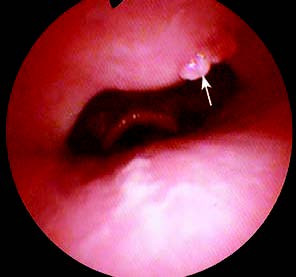Common benign tumors of the oropharynx include papillomas, fibromas, pleomorphic adenomas, and hemangiomas. Other tumors such as lipomas, lymphangiomas, and teratomas are less commonly observed.
Clinical Manifestations
Small tumors are often asymptomatic and are typically discovered incidentally during physical examinations or evaluations for other pharyngeal conditions. Larger tumors may cause a sensation of a foreign body in the throat and, in some cases, may lead to dysfunction in swallowing, breathing, or phonation.
Examinations
Papillomas are frequently located on the uvula, tonsils, and palatal arches. They appear mulberry-like, with a whitish or pale red color, and may have a pedunculated or broad base. Fibromas occur in the same locations as papillomas, vary in size, and present as round protrusions with smooth surfaces that feel firm to the touch. Pleomorphic adenomas are commonly found in the soft palate and exhibit smooth surfaces. Hemangiomas are often located in the soft palate, posterior pharyngeal wall, or lateral pharyngeal wall and present as irregular purple-red masses that are prone to bleeding.

Figure 1 Papilloma on the posterior surface of the soft palate
Treatment
For smaller tumors, treatments such as laser therapy, electrocautery, or cryotherapy may be employed. Larger tumors typically require surgical removal, often through a transoral approach. When the tumor involves the parapharyngeal space or neck, a transoral, transcervical, or infratemporal fossa approach may be utilized.